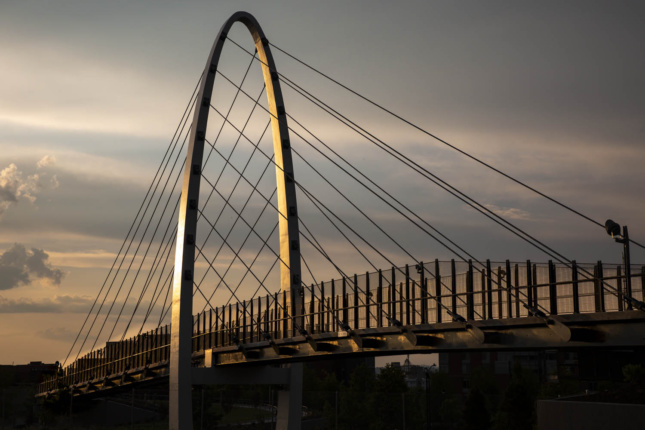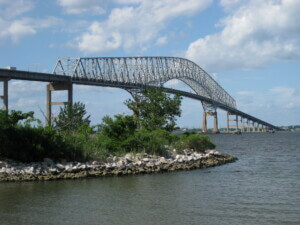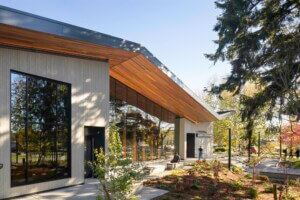Two new bridges designed by Seattle-based LMN Architects are giving back to the Washington state communities of Spokane and Tukwila. The simple, soaring white structures span automobiles and railways bridge gaps between neighborhoods, reclaiming the pedestrian experience in both the historically underserved region of the Sprague and along the bucolic Green River trail.
The Tukwila Urban Center Bridge was a key component of the city’s 20-year expansion plan. The 220-foot-long bridge is located at a major regional crossroads just outside of Seattle that’s poised for expansion. The project was conceptualized with boldness in mind, resulting in a statement piece accentuated by built-in LED lighting that, when activated, climbs up the cables to offer a “subtle web effect” and flashes a colorful light show that plays off the white metallic elements.
Its form was also inspired by the region’s history, taking cues from Pacific Northwest’s tribal canoes, and designed with sensitivity to the river’s large migratory salmon population. Metal grills on either side of the bridge add structural support while also allowing for sunlight to permeate down to the water, keeping it warm and fast-moving for the river life. All the while, the highly visible 45-foot-high bowstring arch acts as a local landmark for the people of Tukwila to easily navigate between the commercial western bank of the city and the more residential east side, previously unnavigable to pedestrians and cyclists. The overall effect, according to LMN, is “Simplicity, clarity, and lightness.”

The University District Gateway Bridge was unveiled side-by-side, with its prominent 120-foot-tall arch rising sharply into the Spokane skyline and visible for miles around the low neighborhoods of the University District and the emerging South University area. The Gateway Bridge is anchored by organically sloping ramps and greenery, while stair options allow cyclists and pedestrians to safely cross a route formerly bisected by a BNSF freight rail and an arterial highway, The 458-foot-long bridge seems to grow harmoniously out of the landscape on either side of the thoroughfare, opening new opportunities for economic and social growth for both neighborhoods: expanded access to housing and retail for the University and its students, and long-awaited economic sparks for South residents.

“One of the great things about public infrastructure projects is that they benefit the entire public,” said LMN principal Howard Fitzpatrick in a statement. “The Gateway Bridge will make a real difference in the lives of many people in Spokane, and the enthusiastic public reception of the project has been very rewarding for the design team.”
While both bridges only span a few hundred feet each, their dimensions are less important than the impact on the communities they connect and carefree transport. While industry and vehicles have a long and well-recorded history of interrupting the traditional human-scaled urban fabric of 21st-century cities, these simple structures are small incisions with a goal for lasting impact.











